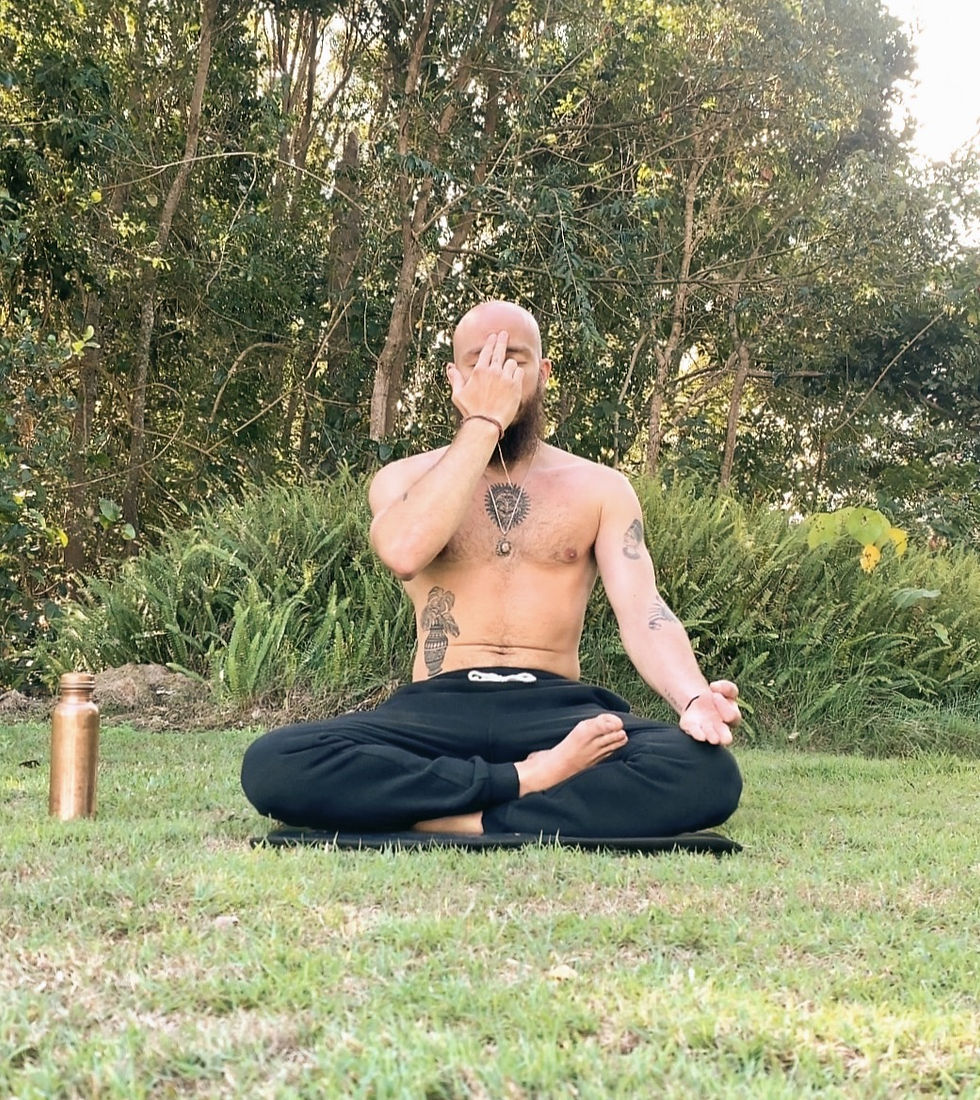What are the benefits of Pranayama?
- Micka

- Sep 29, 2023
- 4 min read
Updated: Aug 6

First of all, let’s introduce Pranayama
Limb number four, Pranayama, is a composed word.
Prana means vital energy or life force, and Yama means control.
But the real word that is joined to form Pranayama is Ayama, which means “extension or expansion”.
The word Pranayama therefore means extension or expansion of the dimension of Prana.
The earliest references to pranayama can be found in ancient Indian yogic texts like the Vedas and the Upanishads, which date back over 2,000 years and possibly even earlier.
The "Yoga Sutras of Patanjali," a foundational text for classical yoga philosophy (I highly recommend this book for those who want to start their yoga journey), includes teachings on pranayama and is believed to have been written around 2,000 years ago.
The technique of Pranayama provides a method whereby the life force can be activated and regulated in order to go beyond one's normal boundaries or limitations and attain a higher state of vibratory energy and awareness.
It is considered one of the key tools for achieving physical, mental, and spiritual well-being.
To control and expand the dimension of Prana, it will be exercised through the practice of controlling it through breath manipulation.
Pranayama offers a wide range of physical, mental, and emotional benefits. It is an integral part of yoga and can be practiced independently or in conjunction with yoga asanas (postures) and meditation.
These are some benefits that you will gain by regularly practicing pranayama exercises
Improves respiratory function through the expansion of the lungs
According to my teacher, who taught me the practice of Pranayama in Rhishikesh (the capital of yoga in the world, India),
A beginner who starts practicing Pranayama regularly will experience, in the first 3 months, an extreme evolution of all the lung functions. It will strengthen respiratory muscles and increase the efficiency of oxygen exchange. By expanding the chest area, it will be very helpful to improve the respiratory apparatus.
This can be particularly beneficial for individuals with respiratory conditions like asthma.
Longevity
According to some yogis who have spent their lives watching nature to understand it, they believe that our breath is limited.
The example that a teacher gave me is the following:
“Take a turtle, whose breath is slow, smooth, and controlled; the turtle will live for more than a hundred years; instead, a dog who has quick breath, not smooth at all, will live for fifteen years.”
From that observation, they believe that if we can master our breath, we can live longer. If we are able to control our breath, we have control over our longevity. That’s why some yogis live for more than a hundred years, like Trailanga Swami, who lived over 300 years, or Shankari Mai Jiew, who made it to 120 years.
Stress reduction
It makes sense now that breath has a huge impact on the body, and so Pranayama will activate the body’s relaxation response, reducing the production of stress hormones. It will put you in a peaceful state of mind where emotion can be controlled. We all know that taking a few deep breaths in some situations can be very helpful to calm our emotions and bring back awareness. And so what if you are always aware of your breath?
Enhanced Mental Clarity
Like I said, what if you are always focused on the breath in the now? Well, practicing Pranayama will also considerably improve focus, concentration, and mental clarity. It can enhance cognitive function and decision-making abilities.
Emotional Balance
Pranayama can help regulate emotions and reduce mood swings. It is often used as a tool to manage conditions like anxiety and depression.
Increased Energy
Proper breathing techniques can boost energy levels by increasing the intake of oxygen. This can help combat fatigue and increase vitality. People familiar with the Ujjayi breath (Ocean breath) know that while you practice Ashtanga, for example, the use of this breath will increase and save yourenergy.
Detoxification
The act of deep breathing in pranayama promotes the elimination of waste and toxins from the body, aiding in detoxification.
Improved Digestion
Some pranayama techniques, like Kapalabhati, can stimulate the digestive system, improve metabolism, and aid in better digestion and nutrient absorption.Never practice Pranayama with a full stomach. Like every practice in yoga, it is better on an empty stomach or 3–4 hours after the last meal.
Better Sleep
Practicing pranayama before bedtime can help calm the mind and prepare the body for restful sleep. It can be an effective remedy for insomnia and sleep disturbances.
Pain Management
Pranayama can be used as a complementary approach for managing chronic pain conditions. It may reduce the perception of pain and promote relaxation.
Balanced Nervous System
Pranayama practices can balance the autonomic nervous system, leading to a state of equilibrium between the sympathetic(fight or flight)) and parasympathetic(rest and digest)) branches.
Enhanced Immune Function
The relaxation and stress-reduction benefits of pranayama can have a positive impact on the immune system, making it more resilient to illness.
Improved Posture
Pranayama encourages awareness of body posture and breathing patterns, which can lead to improved overall posture and alignment.
Pranayama is literally a gift given by teachers for thousands of years. Those practices can definitely change your lifestyle and help cure illness or avoid it. It also increases physical health, blood pressure, and brain function.
It's important to note that pranayama should be learned and practiced under the guidance of a qualified yoga instructor, especially for those new to these techniques. Practicing pranayama with mindfulness and proper technique is crucial to reaping its full benefits and avoiding potential side effects.
The main goal of Pranayama practice remains the same as the achieving goal of Asana: the connection between mind and body and success in your spiritual awakening journey.
Your spiritual growth starts on your mat
Keep practicing
Namaste



Comments